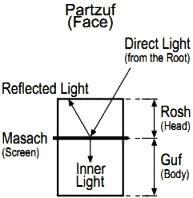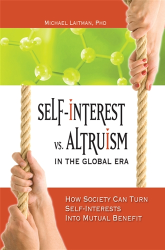
In “What Are the Four Developmental Stages of the Primordial Desire in Creation?” we discussed the emergence of the desire to receive in Stage One, and the desire to give in Stage Two, as offshoots of the primordial desire to give in the Root. We also showed how because of its desire to give, the desire to receive was reactivated in Stage Three and maximized in Stage Four. Maximizing the desire to receive caused it to want not merely to enjoy, but to actually become like its progenitor—the Root Stage—and even to have the status of the Root Stage’s primacy. The subsequent realization that this was not (yet) possible induced a sense of inherent inferiority in Stage Four, which induced a restriction—elimination of any sensation of pleasure (light).
Also, because Stage Four’s real desire is for the Root’s primacy, it does not settle for the unbounded pleasure received in Stage One. Instead, it wishes to obtain the nature of the Root, the Thought of Creation, and consequently the Root’s primacy.
Thus, the elimination of pleasure in Stage Four is neither a result of its inability to receive, nor a consequence of the Root’s inability to give. The Root gives incessantly, but the desire to receive does not want to receive something as degrading as charity (as described by Ashlag in “The Giving of the Torah”). for this reason, because Stage Four wishes to acquire the giver’s thought and become like its Creator, its restriction is an offshoot of its decision to not receive unless with the intention to bestow, as this reciprocates the Creator’s desire to bestow.
The Structure of a Partzuf
To achieve that, Stage Four builds a three-part mechanism, called Partzuf (face), to determine if it should receive light, and if so, how much, with the aim to bestow at any given moment opportunity. The top section of the Partzuf is called Rosh (Head). Its task is to determine how much of the abundance (light) is to be received by the desire to receive. The desire to receive itself constitutes the bottom part of the Partzuf, which is called Guf (Body).
Between the Rosh (Head) and the Guf (Body) stands the Masach (Screen). Just as a selectively permeable membrane allows only some molecules to seep through it, the Masach screens out the light, allowing into the Guf only as much light as the Rosh decided it could receive with the intention to bestow, while repelling the remainder of the light. That way, the Masach functions as a guard, making sure the degradation sensed immediately prior to the restriction will not return.
In a sense, a Partzuf can be compared to a big company, where the Masach is like the Human Resource (HR) department in that company. If the management, the Rosh (head), wishes to increase production (bestowal, level of being like the Creator), it needs to hire more people (desires) so it can receive more light/ pleasure (thus bestowing upon the giver). once new people are hired, they will be admitted into the company (Guf, body) and will be put to work: receiving pleasure in order to bestow.
When the Rosh decides it is time to act, the Masach—HR department—screens the applicants (desires) and chooses only the right ones. A new employee (desire) must not be under-qualified (too small), since that would not bring pleasure to the Creator (because you cannot experience great pleasure when you have a small desire for it). It also cannot be over-qualified (desires that are too intense to be used with the aim to bestow), since that would reawaken the excessive desire to receive and the creature’s resulting degradation.
Look at the Partzuf Like an Entrepreneur
Yet, in both the Partzuf and its mundane “work-alike” company, which we can call “Creation,” a problem remains unsolved: What about the desires (people) who were not hired (made to work in order to bestow in the Guf of the Partzuf)? Are they doomed to eternal unemployment (rejection)? That would mean that there will always be lights (pleasures) that the Creator wishes to impart, but which we cannot receive. This defies the purpose of creation: for the recipients (Creation, us) to receive unbounded delight, the power, knowledge, and supremacy of the Creator.
Indeed, eventually all the desires will be “hired” and put to work, and all the lights will be received. However, to avoid overloading the system and risking a total collapse, some desires must be temporarily put on hold. The lights that should be received in those desires are therefore reflected and remain as “surrounding lights” The desires and lights that cannot be put to work for the time being apply constant pressure on the Partzuf, “reminding” it that there is still more pleasure to receive if it is to receive from the Creator everything that the Creator wishes to impart. In our mundane example, the marketing department is the “surrounding light”—constantly reporting new potential markets into which the company can expand, and which can produce substantial profits.
 “What Is a Partzuf?” is based on the book, Self Interest vs. Altruism in the Global Era: How Society Can Turn Self Interests into Mutual Benefit by Dr. Michael Laitman.
“What Is a Partzuf?” is based on the book, Self Interest vs. Altruism in the Global Era: How Society Can Turn Self Interests into Mutual Benefit by Dr. Michael Laitman.
